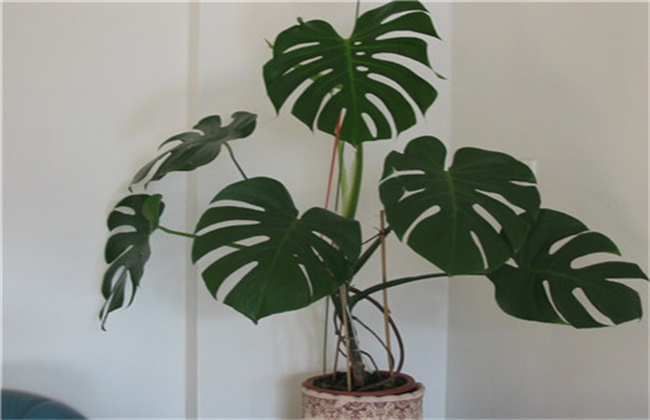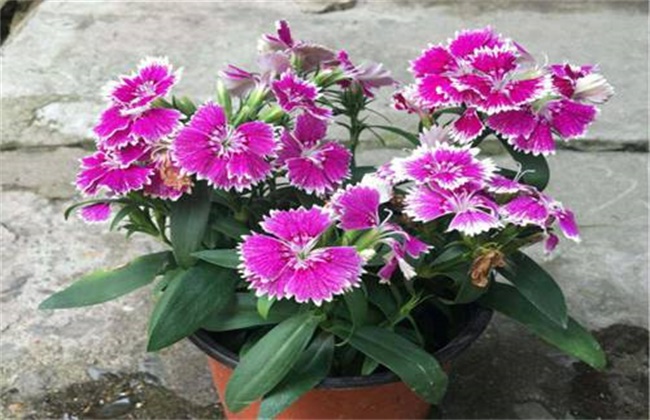How to deal with frostbite of bamboo leaves on tortoise back
Phyllostachys pubescens is a very common flower plant, which is distributed all over China. The ornamental property of tortoise-backed bamboo is high, and it can be used in courtyards and parks. And as a kind of potted plant, it is also very popular, but when we breed tortoise back bamboo, we should pay attention to the temperature. If the temperature is too low, frostbite leaves will have a great impact on the growth of tortoise back bamboo. So what about the frostbite of the bamboo leaves on the back of the tortoise? Let's take a look at it.
1. Cut off the rotten leaves
The cold resistance of tortoise back bamboo is relatively poor, if the temperature is too low to cause frost damage to the leaves, then the leaves will basically be frostbitten and crushed, losing the ornamental value. As for the leaves that have been frostbitten, they should be removed in time and should not be left on the plant. Because the leaves no longer have any value, they will not only reduce the ornamental value, but also continue to consume nutrients. Therefore, we should timely cut this kind of leaves from the base, and should also be properly pruned, mainly to the top leaves of the plant, and keep about 1 stem 3.
2. Pruning rotten roots
After the leaves of Phyllostachys pubescens are frostbitten, its roots will be more or less affected by frostbite. When we take out the tortoise-backed bamboo plant, we will find that there are some rotten roots. So we should not only prune the rotten leaves in time, but also cut off the rotten roots in time. The rotten roots near the bamboo stems of the tortoise back should be removed directly, and then the roots should be disinfected to avoid wound infection, occur diseases and insect pests, and aggravate the phenomenon of rotten leaves and rotten roots of the turtle back bamboo. Therefore, slightly blackened roots can not be retained, to ensure that all healthy roots.
3. Temperature adjustment
The frostbite of the leaves of tortoise back bamboo must be caused by the low temperature. Therefore, after it is found that the rotten leaves and roots of the tortoise back bamboo have been cut off, we should adjust the temperature in time. If the potted plants are raised outdoors, they should be moved indoors in time. The indoor temperature should be kept above 5 degrees, and when the outside temperature gradually rises and thaws, the high temperature should not be given directly. Only when the temperature is completely thawed can the temperature be raised gradually. Only in this way can the bamboo on the back of the tortoise gradually return to growth. If the temperature changes too much, it is very likely to lead to the death of the tortoise-backed bamboo.
4. Proper watering
When alleviating the frostbite of the tortoise back bamboo, we should pay attention to controlling the amount of water, never watering too much, and it is best to keep the soil in a dry state. In this way, the cold resistance of tortoise back bamboo can be improved effectively. And if too much watering, it may lead to more freezing damage, more rotten roots, and death in serious cases. Can be properly watered in the later stage, but not at low temperature, should be properly watered at noon when the temperature is higher, and the amount of water should not be too much, and pay attention to the water temperature, do not water cold water, and wait until the plant gradually recovers before normal watering.
The above is a brief introduction to how to deal with frostbite of tortoise back bamboo leaves. That's all for today's introduction. This article is for reference only. I hope it can help you all.
Related
- Fuxing push coffee new agricultural production and marketing class: lack of small-scale processing plants
- Jujube rice field leisure farm deep ploughing Yilan for five years to create a space for organic food and play
- Nongyu Farm-A trial of organic papaya for brave women with advanced technology
- Four points for attention in the prevention and control of diseases and insect pests of edible fungi
- How to add nutrient solution to Edible Fungi
- Is there any good way to control edible fungus mites?
- Open Inoculation Technology of Edible Fungi
- Is there any clever way to use fertilizer for edible fungus in winter?
- What agents are used to kill the pathogens of edible fungi in the mushroom shed?
- Rapid drying of Edible Fungi



